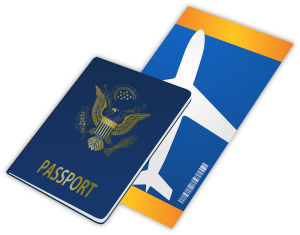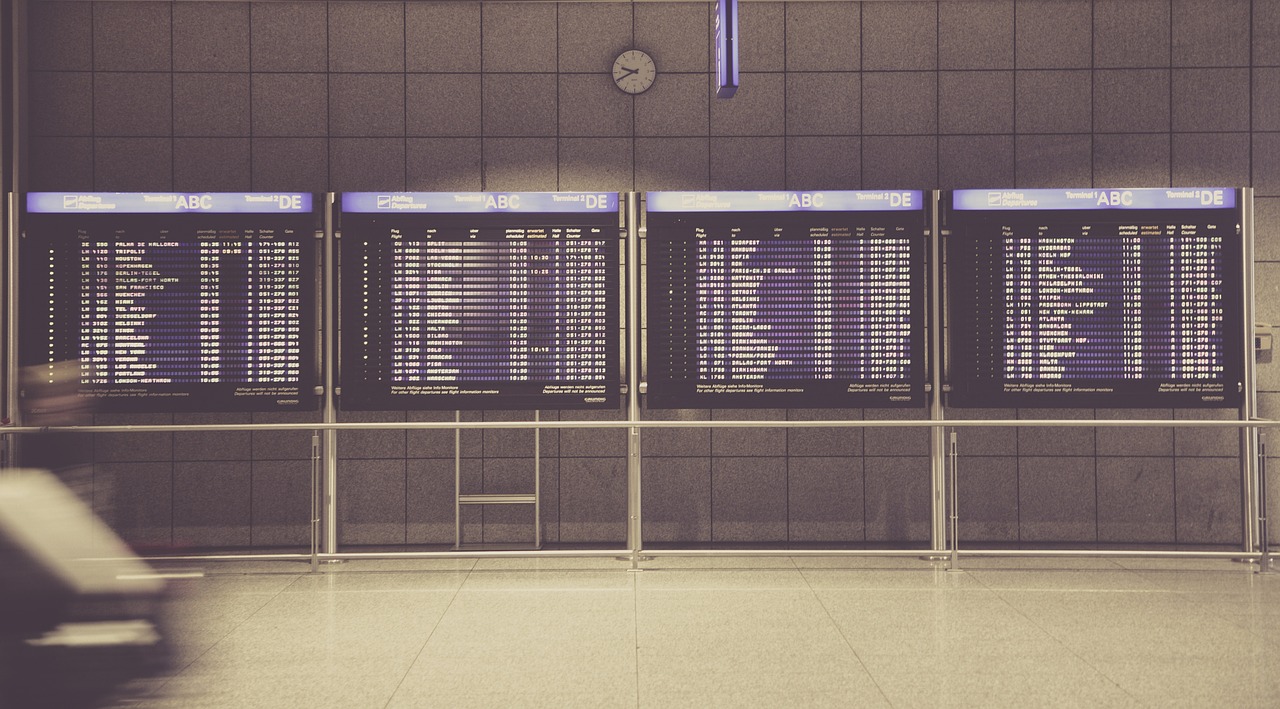Laos visa on arrival and entry proceedure
Coming to Laos? Fantastic, you’re going to love it, have an amazing time and go home thinking it was one of the best decisions you have ever made.
But first you have to get here and the paperwork involved in international travel these days can be a little off putting. But don’t worry, the requirements for a Laos visa are pretty simple and negotiating the application form and Laos immigration should not deter you from visiting this spectacular part of the world.
 The most basic requirement is a passport and you need to make sure that it is valid for at least 6 months from your date of arrival. You will not be allowed in if this is not true and may well be refused entry to the plane when you try to leave home. You will also need a few empty pages. If you are down to your last couple (lucky you) it’s probably time to get a new one.
The most basic requirement is a passport and you need to make sure that it is valid for at least 6 months from your date of arrival. You will not be allowed in if this is not true and may well be refused entry to the plane when you try to leave home. You will also need a few empty pages. If you are down to your last couple (lucky you) it’s probably time to get a new one.
The second thing is a valid entry visa. There are ASEAN member countries that this will not apply to but you know who you are, for everyone else you can either apply for a visa in your home country or get one on arrival in Laos.
Applying for one before you leave can sound like the safe, sensible and organised thing to do, and it probably is, but there are a couple of things to keep in mind. You will probably pay more to pre arrange your visa. How much depends on whether you go directly to a Laos consulate (assuming there is one near enough to you) or you use a “service” to do it for you. A quick look at an online visa service shows me one that is charging $129 for a 6 – 10 day turnaround.
The other thing to be aware of is the difference between “validity” and “length of stay”. Once you have received your visa the validity is the amount of time you have to enter Laos. Don’t apply 6 months before you plan to travel and then be surprised when your entry is rejected because your visas validity actually ran out 60 days after you got it.
Also, and possibly more importantly, validity of the visa has nothing to do with how long you are allowed to stay in Laos. Your length of stay is decided by the immigration officer who stamps your passport when you enter the country and will most likely be 30 days if you arrive by air and 15 days if you come overland. Even if you have paid extra money and managed to obtain a 60 day visa from the Laos consulate in your home country, this will mean little when you stand before the immigration official in Laos. Check the date that is stamped into your passport at this point, it is when you are required to leave or have your visa renewed.
Of course you could simply get a visa on arrival. With the exception of a few countries (listed here on the Ministry of Information, Culture and Tourism site http://www.tourismlaos.org/show.php?Cont_ID=348 it’s easy to do as you enter Laos.
If you are entering by air let’s take flying into Luang Prabang as an example.
On the plane you will be handed two forms. One is an immigration form and contains all of the usual questions of who you are and where you’re from. Fill in both the arrival and departure parts, the departure part will be given back to you to hand over when you leave Laos. Put it to one side. The other form is your visa on arrival application. You simply need to fill in the required parts, asking for 30 days since you will pay the same amount anyway so you may as well get as long as you can. Neither form are overly complicated and should only take a few minutes to complete but they do kill a bit of time on the flight and having them completed on the plane will keep you from being sent to the back of the visa application queue once you get into the airport.
You will also need a passport sized photo. I always advise people to travel with a few photos , you never know when you might need them and official documents in places like Laos always seem to need photos attached to them. If you hand in your visa application and you don’t have a photo you will get a long suffering look and have to pay a couple of dollars for an official to photocopy the photo in your passport.
So, the plane touches down, you climb down the ladder and wonder where to go now. Unless you are lucky enough to be on a plane utilising the airbridge you will now be standing on the tarmac facing the terminal building. Walk towards it and head towards the extreme right hand end. This is where international arrivals is and it really is the far right hand end of the building. When you enter you will be directed to the “visa on arrival queue”. A few lucky people who have business visas or are locals will bypass this and head straight to immigration but you will join the queue.
Reaching the head of the queue you hand your passport, visa on arrival application form and passport photo to the official. Keep your immigration form, this official isn’t interested in it. As soon as he takes everything you follow the roped line around to the next window where you pay for your visa. There is a sign here showing all of the different rates that different nationalities have to pay. You can only pay in cash and US dollars are far and away the preferred currency. You may be able to pay in Thai baht but the exchange rate is going to be horrendous. The cost of the visa is going to be between $30 – $40 depending on your nationality plus another couple of dollars for a processing fee. Have $10 notes and a few $1 notes to pay this. Being first in line and giving them a $100 bill is only going to mean that you will be made to stand aside until they feel they have accumulated enough change to be able to take your payment. If there is one truism of international travel it’s that you will never win an argument with officialdom so it’s much easier for all involved if you think a little ahead and make everyone’s life easier.
Now having paid for your visa on arrival you will move down to the next window where your passport will be returned to you with the visa stuck into it, taking up a full page. Of course this doesn’t guarantee you entry into the country, it’s the immigration official at the next window who decides that. They are the ones who look you up and down, ask you the nature of your visit etc and then, with seeming reluctance no matter what country you’re visiting, stamp your passport and let you in.
Look at the date that has been stamped! This is when you are required to leave Laos. If you are only visiting for a few days or a couple of weeks it’s not going to be an issue, but if you are planning to stay longer than this date then you will need to renew your visa, which we will get to shortly. Should you forget and stay past this date then you will be fined $10 for every day you overstay, a quickly expensive problem.
So now you have all your stamps in your visa you can head over to the luggage carousel, grab your bag and head out into Laos proper. You won’t find any public transport, tuktuk, taxi etc but there is a desk with a van service into town directly in front of you as you exit immigration. This is your only transportation option if you aren’t being met or don’t want to walk, but it is safe, the price is fair and regulated and it may be the last bit of air conditioning you get to experience before you return to the airport to leave.
But what if you are travelling overland by bus or train. Essentially it is the same procedure but, instead of going through the process of leaving one country and then entering another with the relaxing break of a flight in between, you are going to have it all compressed into a much smaller period. If, for instance, you are entering Laos from Thailand by way of the Friendship Bridge at Nongkhai which is the main overland entry point into the Laos capital Vientiane, then you find yourself getting off your bus at the Thai end of the bridge, queueing up to have your passport stamped by Thai immigration as leaving Thailand, getting back on the bus for a very short trip over the bridge before having to queue up again to enter Laos. The same procedure applies as at the airport with the same forms and the same requirements so the same advice applies. You will have been given the paperwork on the bus so fill it out before you arrive at the checkpoint because this time you have the potential to hold up a whole bus load of people if you haven’t.
Be even more aware of the date stamped into your passport here because it is likely to be shorter than if you had arrived by air.
Hooray, you’re in Laos and have your visa safely stamped into your passport!
But now you’ve fallen in love with Laos and the 4 weeks you had devoted to travelling around the country simply are not going to do it justice. You can extend your visa up to 30 more days while you are in country and it’s as simple as filling in a form and paying some more money. It will, however, take a little bit of forward planning. Expect to do it in one of the major cities and expect it to take a couple of days. You will need to go to an office of the immigration department, fill in the application form, pay 20,000 kip (about $2.50 usd) for each day you wish to extend (plus a couple of dollars processing fee) and then leave your passport. Most likely you will be able to pick it up the next day but if you apply on a Friday then the next day will be Monday.
Yes, you will have to leave your passport with them so don’t wait until the day your visa expires to do it. Think ahead and go in a few days before, the extension will be dated from when the old one expires, not the application date, so being a little early is no disadvantage. It’s quite possible that the visa staff are in a meeting or the person who signs the visas is away for the day, all of which means that you have to come back the next day. If this means you will overstay then you will be charged $10 per day you go over that visa expiry date. No use arguing that you came in the day before; you went over so you pay.
You can also apply for whatever number of days you need meaning that you only have to pay for what you need. Only need an extra 6 days?, only $15 then. Each of these visa renewals is another large stamp in your passport though so make sure you have sufficient blank pages for these and future travel.
But if you find that even an extra 30 days is still not enough then you have the option for another 30 day extension in country. You can, by extending, stay for a total of 90 days in Laos before you must leave the country. If you want to stay for more than 90 days then you have to leave Laos and then re-enter on a fresh visa, just keep in mind that immigration may question you regarding whether you are in fact a tourist or are working illegally.
The office in Luang Prabang is located in the Police Headquarters compound. Just walk in past security at the gate and head straight towards the building directly in front of you. It’s the second door on the left although it’s not really marked as anything. I’ll put a map at the bottom of this post. The office is open (as at this posting) between 8am and 11am, closed for lunch and then open again between 2pm and 4pm. It is closed on public holidays.
All of this is correct at the time of writing and, while things can change, entry into Laos is not as difficult, painful or time consuming as it is into other countries. Make the effort, you will not be disappointed.


